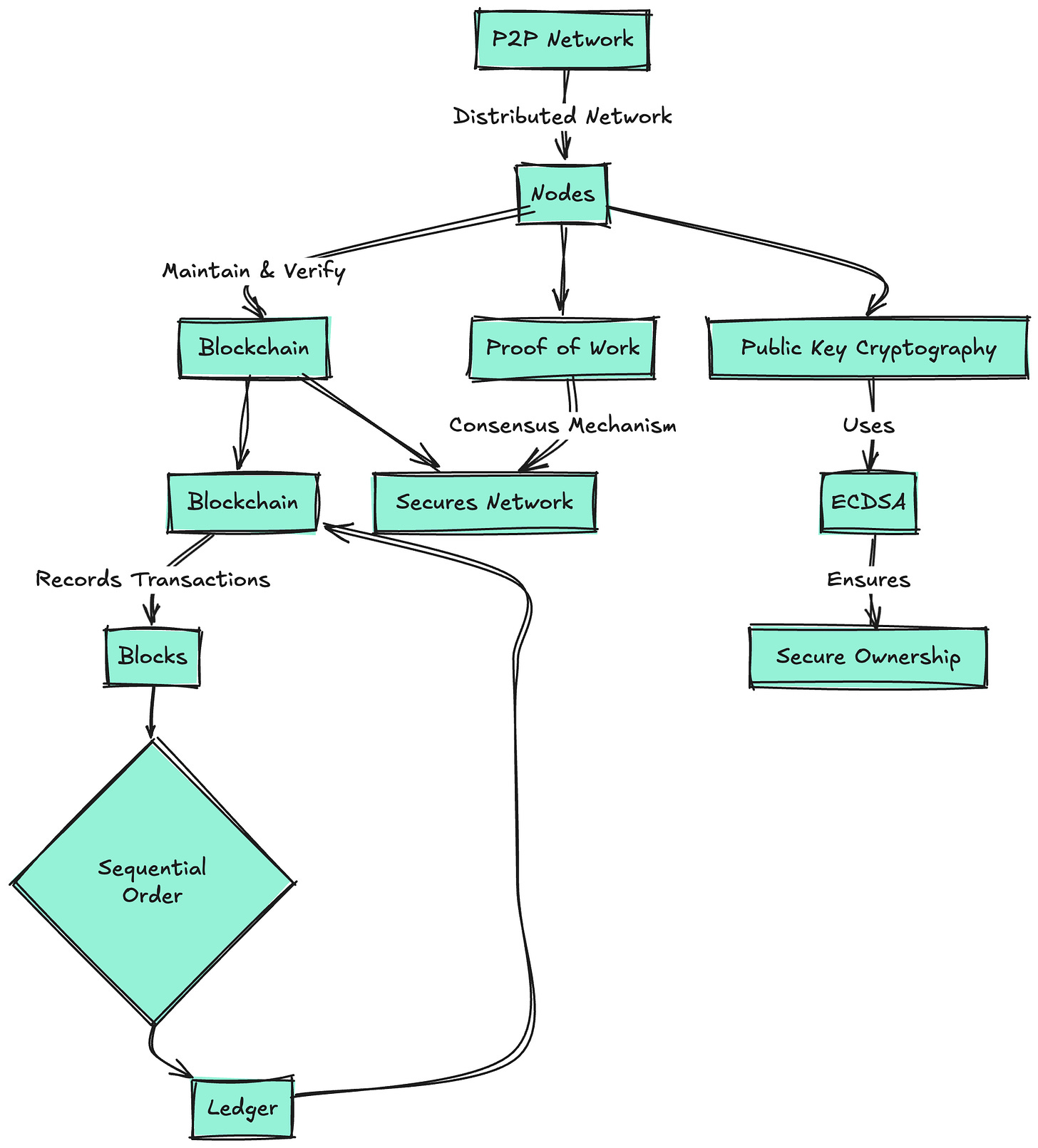[System Design Tech Case Study Pulse #42] $100000 per BTC : How Bitcoin Actually Works
Behind the tech with detailed explanation and flow chart....
Hi All,
Bitcoin represents one of the most sophisticated implementations of cryptographic and distributed systems engineering ever created. At its core, it's a masterfully orchestrated dance of several key technologies: a decentralized blockchain that maintains an immutable record of all transactions, robust public key cryptography using the ECDSA algorithm for secure ownership verification, and a Proof of Work consensus mechanism that secures the network through computational challenges.
When you send Bitcoin, your transaction embarks on a fascinating journey: your wallet first identifies unspent transaction outputs (UTXOs), digitally signs the transaction using your private key (a 256-bit random number), and broadcasts it to a vast peer-to-peer network of nodes. These nodes validate the transaction through a complex series of cryptographic checks before miners compete to include it in the next block through an energy-intensive process of SHA-256 hashing. This mining process, which requires specialized ASIC hardware and significant electrical power, isn't just about creating new bitcoins – it's an ingenious security mechanism that makes it economically infeasible to alter the blockchain's history. The entire system is held together by a set of consensus rules that ensure all participants agree on the state of the network, making Bitcoin a remarkable achievement in solving the double-spending problem without requiring trust in any central authority.
Share this post and Avail Offer : https://naina0405.substack.com/65d00104
How Real World Scalable Systems are Build — 200+ System Design Case Studies:
System Design Den : Must Know System Design Case Studies
[System Design Case Study #27] 3 Billion Daily Users : How Youtube Actually Scales
[System Design Tech Case Study Pulse #17] How Discord's Real-Time Chat Scales to 200+ Million Users
How Bitcoin Actually Works ( Behind the Tech in detail) —
Core Technology Components
Blockchain: A decentralized ledger that records all transactions in sequential blocks
Public Key Cryptography: Uses ECDSA (Elliptic Curve Digital Signature Algorithm) for secure ownership





